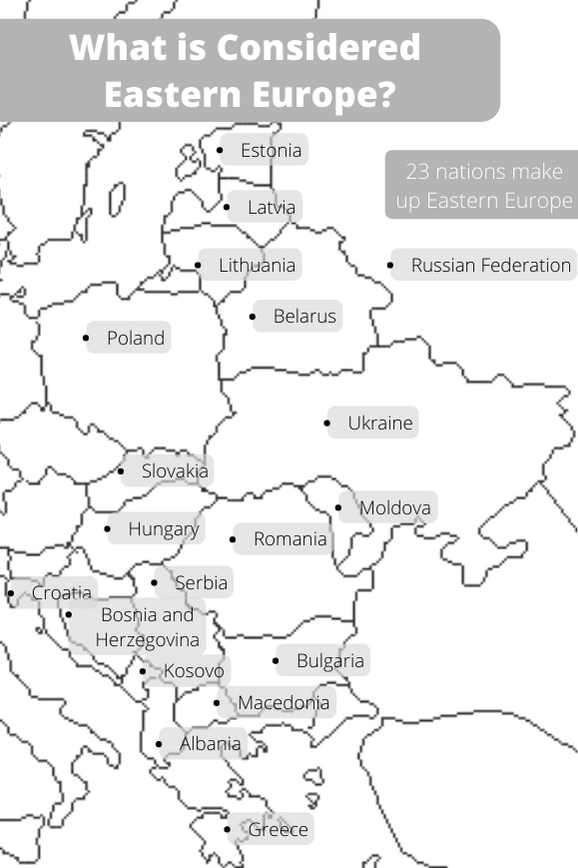Eastern Europe: more than what meets the eye
There are 23 nations that are considered a part of Eastern Europe.
May 4, 2022
The world history class is filled with silence as pencils stall over a blank geography test labeled “Eastern Europe.” Despite all the students studying, they feel there are just too many countries to memorize.
Though many students might not be familiar with these nations, around 292 million people call Eastern Europe their home. As the conflict between Russia and Ukraine continues, many may have altered their perception of Eastern Europe from an irrelevant cluster of countries to a war zone, where their inhabitants are constantly battling oligarchies.
If people were to sum up America the same way and put all the U.S. problems under one president’s name, Americans would be incredibly mad. It paints over the vastness of U.S. history and the fight that many American activists and civil rights leaders had put themselves through to improve the nation.
The same applies to Russian-Americans who are also forced to live under scrutiny as anti-Russian attacks are on the rise. One of them occurred in Washington, D.C. on March 5 at Russian House Restaurant and Lounge. All three of the restaurant’s front windows had been smashed in by a rock.
Similarly, Russian restaurants in New York City and Columbus, Ohio have all received threatening calls and verbal threats from passersby. The San Diego-based Pushkin Russian Restaurant received a bomb threat over claims they supporting Russia. When ABC 7 reached out to the restaurant owner–who is Armenian–he stated that he had given extra money to his Ukrainian employees to send to their family members still in Ukraine.
The generalization that all Eastern Europeans are Russians and that all Russians must be supporting Vladimir Putin, is absurd.
By assuming anyone who sounds or says they are from Eastern Europe must be Russian, it paints over centuries worth of history and culture. Not only can Eastern Europe culture be found in its homeland, but in the U.S. as well.
Many north eastern cities like New York City, Chicago and Pittsburgh have strong Catholic, Orthodox and Jewish history due to the hundreds of thousands of Eastern European immigrants coming to America for a better life. Cultural foods like Feta, a traditional Greek cheese, Perogies, a traditional Polish dumpling and even Bagels, a traditional Jewish bread, are loved by Americans and can be found in almost every supermarket.
When a person takes a step back and compares each country and their regions, a spectrum of shared culture and their unique differences can be found all across the region. Eastern Europe shouldn’t be characterized by oligarchs, negative stereotypes and wars, but by its culture, its food, and most importantly, the people who live in each of its sovereign nations.



